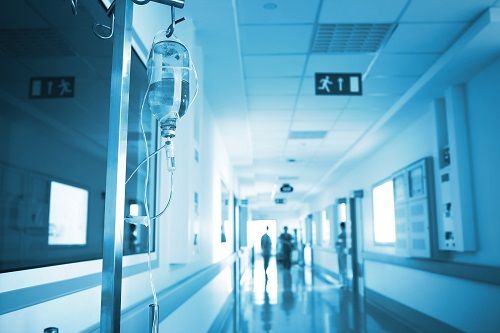Survey: Healthcare Worker PPE Causing Serious Skin Damage
Device-related pressure injuries, moisture-associated skin damage, and skin tears were all common among Chinese clinicians treating the coronavirus.

Skin injuries among health care workers wearing personal protective equipment (PPE) are prevalent and as much as half are going untreated, according to a new article published in Advances in Wound Care.
Investigators from China reviewed 4306 health care worker survey responses in order to understand the prevalence, characteristics, and preventative status of skin injuries caused by PPE among medical staff—a recurrent, global issue among coronavirus 2019 (COVID-19) responders.
The survey was conducted via a cell phone questionnaire across 161 hospitals in 28 provinces or autonomous regions of the country from February 8-22 of this year. The surveyed participants were healthcare workers who wore PPE including protective masks, goggles, face shields, and protective gowns during their 8-12 hour shifts.
The majority of participants were female and nurses. Two-thirds of the respondents were <35 years old. About one-third of reported wearing grade 3 PPE, while the remaining two-thirds wore grade 2 PPE.
As many as 80% of the workers reported that different skin injuries damaged their health and increased the risk of infection, investigators reported.
While device-related pressure injuries (DRPI), moisture-associated skin damage (MASD), and skin tears (ST) were mostly occurred in patients, investigators wanted to determine the damage in health care workers.
The investigators determined that there were about 2.6 skin injuries per healthcare worker, with the overall prevalence at 42%. DRPI, MASD, and ST was prevalent in 30%, 10%, and 2% of respondents, respectively.
About three-fourths of patients had ≥2 types of injuries, including:
- 78% of survey participants reporting DRPI plus MASD
- 13% reporting DRPI, MASD, and ST
- 7% reporting DRPI and ST
- 1% reporting MASD and ST
In assessing the severity of DRPI based on clinical staging, investigators found that 81% of healthcare workers were at stage 1, 18% were at stage 2, and <1% developed deep tissue injury.
DRPI mostly occurred on the nose bridge and cheeks, but was also reported on the ears, forehead and other areas, investigators wrote. Reports of MASD were more evenly split among the nose bridge, cheeks, and ears, but was also observed on the forehead and other areas. ST was noted in all areas of the body.
The study authors also found that the prevalence of skin injuries was higher in males (59%) than females (40%). It was also higher in doctors compared to nurses (51% vs. 41%) and in those wearing grade 3 PPE compared to grade 2 PPE (88% vs. 21%).
Those who were older than 35 years had higher prevalence of skin injuries compared to those younger (46% vs. 41%). Additionally, those who reported heavy sweating also had higher prevalence of skin injuries than those who did not (91% vs. 17%).
Those who wore their PPE >4 hours daily had higher prevalence of skin injury compared to those wearing it less than that amount of time (47% vs. 18%).
Less than 20% of surveyed workers reported using preventative dressings or oil agents to prevent skin injuries. About half of those with skin injuries had no treatment, investigators wrote; those that did get treatment used dressings, oil agents, or other methods.
Investigators noted that at first, health care workers ignored skin protection strategies, and those on the front lines did not receive training on how to prevent and treat skin injuries.
“Some worried that if they used dressings to protect their nose bridge and cheeks, the mask and goggles would not close enough and possibly bring higher infected risk,” they wrote. “Relevant preventive resources in response to public health emergencies were inadequate, and so, medical staff used what was available.”
The study’s findings suggested the necessity to more adequately prepare responders to public health emergencies—both in prophylactic dressings and understanding of PPE burden.
“The material and shape of prophylactic dressings should be improved in the future, such as to develop various prophylactic dressings suitable for the head and face to effectively keep the moisture balance and protect skin, which are beneficial to deal with skin injuries of medical staff in public health emergencies,” investigators concluded.
